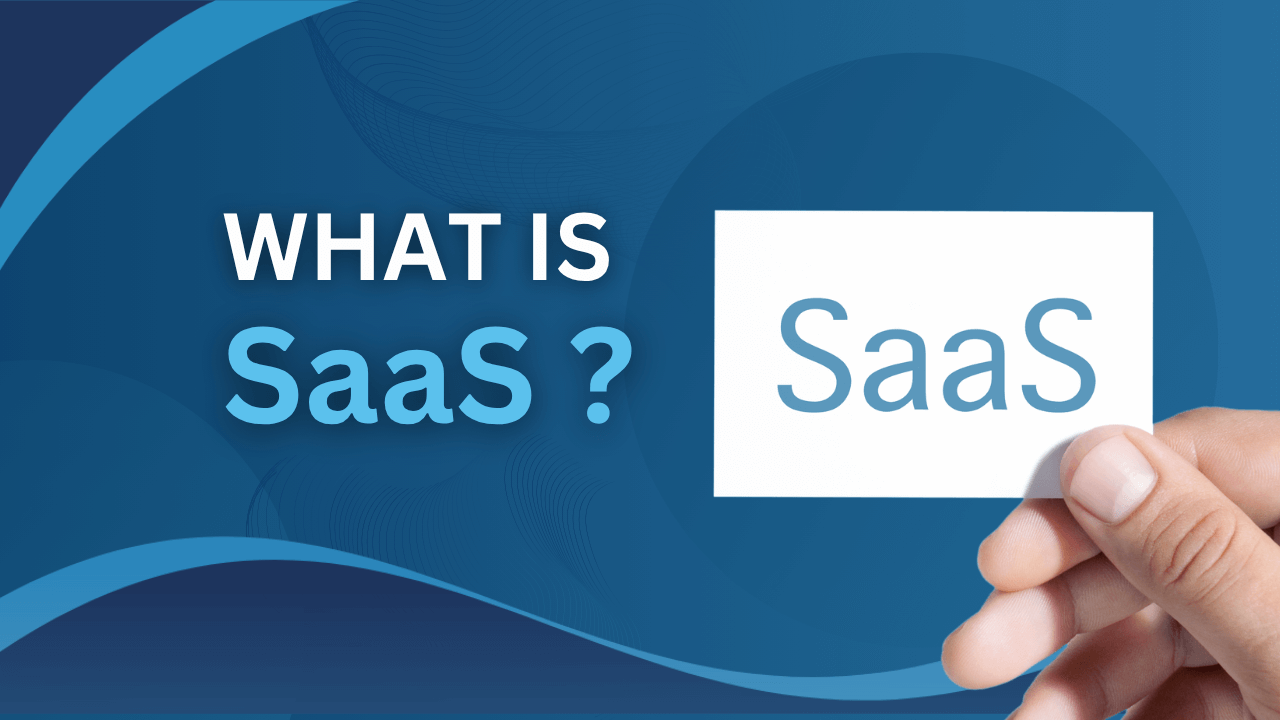According to the Australian Cyber Security Centre’s (ACSC) Annual Cyber Threat Report 2023-2024, the ACSC received over 87,400 cybercrime reports in the 2023-2024 financial year. This equates to an average of one cybercrime report every six minutes within Australia. Whether it’s a sophisticated ransomware attack, a phishing scam, or a data breach, the consequences can be devastating. Are you prepared to defend your business against these growing threats?
Cyber security refers to the practices and technologies designed to protect systems, networks, and data from cyber threats. It’s no longer just an IT issue—it’s a critical business function that impacts operations, finances, and reputation. From small enterprises to large corporations, every business must take cybersecurity seriously to protect sensitive data and maintain customer trust.
Emerging challenges further complicate the landscape. The rise of remote and hybrid work has expanded the attack surface, making businesses more vulnerable to cyberattacks. Additionally, the increasing use of AI-powered tools presents new risks, with cybercriminals leveraging advanced technologies to launch more sophisticated attacks.
This article explores why cybersecurity is essential for Australian businesses and provides practical insights on how to protect against threats. We will examine the current cyber threat landscape, the impact of cyberattacks, key security measures, and future trends in cybersecurity. By understanding these critical areas, businesses can take proactive steps to safeguard their operations and reduce cyber risks.
What is Cyber security?
Cyber security refers to the protection of digital systems, networks, and data from cyber threats such as hacking, fraud, or malware. Essentially, it involves a combination of technologies, processes, and practices that work together to safeguard online activities. By doing so, cybersecurity helps protect sensitive information and ensures the integrity of business operations. In today’s increasingly connected world, these security measures are more important than ever, as businesses rely heavily on digital tools and systems to operate efficiently.
Why is Cybersecurity Important for Australian Businesses?

Cyber security is crucial for Australian businesses for several key reasons. First, it helps protect sensitive customer data, including personal and financial information. Without robust cybersecurity, businesses are vulnerable to data breaches, which can lead to significant financial losses and, as a result, damage customer trust. Additionally, cybersecurity ensures the continuity of business operations. If a cyberattack occurs, it can cause major disruptions, leading to downtime and a loss of productivity.
Furthermore, implementing strong cybersecurity measures is essential for preserving a business’s reputation. A single cyberattack can tarnish a company’s image and make it much harder to rebuild customer confidence. Moreover, with the rise in frequency and sophistication of cyberattacks, businesses that fail to invest in cybersecurity expose themselves to greater risks, including potential legal consequences and regulatory fines. Therefore, prioritising cybersecurity is not just about protecting your business—it’s about ensuring its long-term success and survival in today’s digital landscape.
The Current Threat Landscape in Australia
The cyber threat landscape in Australia is constantly evolving, presenting significant challenges for businesses of all sizes. To illustrate, according to the Australian Cyber Security Centre’s (ACSC) Annual Cyber Threat Report 2023-2024, the ACSC received over 87,400 cybercrime reports, equating to one report every six minutes within Australia. Furthermore, small businesses faced an average financial loss of $49,600 per cybercrime incident. Consequently, it’s evident that the financial impact of cybercrime is substantial. In addition, the Office of the Australian Information Commissioner (OAIC) also reports a significant number of data breaches, highlighting the persistent risk of compromised customer information. In particular, sectors like healthcare, finance, and government remain prime targets for cyberattacks (general knowledge, widely reported – specific sector stats would require further research and citation).
Common cyber threats targeting Australian businesses include:
• Ransomware
To begin with, this type of attack involves cybercriminals encrypting a company’s data and demanding a ransom for its release. Consequently, the impact can be devastating, often leading to significant financial losses, operational disruptions, and long-term recovery costs.
• Phishing, Smishing, and Vishing
Similarly, these methods involve attackers tricking employees through email (phishing), SMS (smishing), or phone calls (vishing) to disclose sensitive information such as login credentials or financial data.
• Data Breaches
In addition, losing customer or employee data can have serious consequences, including regulatory fines under the Privacy Act and reputational damage. Moreover, companies may also face lawsuits from affected individuals.
• Malware and Viruses
Furthermore, malware includes a variety of harmful software that can infect systems, steal data, or disrupt operations. Typically, these threats spread through email attachments, infected websites, or malicious downloads.
• Business Email Compromise (BEC)
Likewise, attackers impersonate trusted executives to trick employees into transferring funds or disclosing confidential information. As a result, these attacks are highly targeted and often go unnoticed until significant damage is done.
• Supply Chain Attacks
On the other hand, cybercriminals exploit vulnerabilities in third-party vendors to gain access to a business’s systems. In many cases, a compromised vendor can provide an entry point for an attack.
• Insider Threats
Meanwhile, these arise from employees or contractors who either act maliciously or negligently, such as by mishandling sensitive information or falling for phishing scams.
• Social Engineering
Additionally, this tactic manipulates individuals into divulging confidential information. For instance, it can include strategies like impersonating a trusted figure or using psychological tricks to exploit human vulnerabilities.
The nature of cyberattacks is continuously evolving. With this in mind, the rise of emerging technologies such as artificial intelligence (AI) and the Internet of Things (IoT) is making cybercriminals more sophisticated, and businesses must constantly adapt to stay ahead of these threats. At the same time, the integration of AI into cybersecurity solutions is helping detect and prevent attacks, but it is also being used by cybercriminals to enhance the effectiveness of their attacks. As a result, cybersecurity must be a top priority for businesses in Australia to mitigate these growing risks.
The Impact of Cyberattacks on Australian Businesses
Cyberattacks can have a significant and lasting impact on Australian businesses, both financially and operationally. The consequences go far beyond immediate costs, affecting every aspect of an organisation.

Financial Losses.
Firstly, the direct costs of a cyberattack can be devastating. Businesses may face ransom payments, the cost of data recovery, and expenses related to system repairs. However, indirect costs are often much higher. Business disruption and lost productivity can stretch for weeks or even months, leading to financial strain. Additionally, legal actions and regulatory fines, particularly in cases of data breaches, can add to the financial burden. For example, under the Privacy Act, businesses may be required to notify affected individuals, which can result in hefty fines if regulations are violated.
Reputational Damage.
Secondly, one of the most lasting impacts of a cyberattack is the loss of customer trust. When a company suffers a data breach or other cyber incident, it can lead to diminished confidence from existing and potential customers. A damaged reputation can harm a business’s brand image, causing it to lose customers, partners, and investors. Negative media coverage can exacerbate the damage, further tarnishing public perception. Recovering from this type of reputational harm can take years and may result in long-term consequences for the business.
Operational Disruption.
Thirdly, cyberattacks can bring business operations to a halt. System downtimes and interruptions can prevent companies from accessing critical data, communicating with clients, or completing necessary transactions. These disruptions can have a cascading effect, impacting supply chains, internal workflows, and customer relationships. In some cases, businesses may struggle to recover from the loss of critical data or systems, resulting in further operational delays.
Legal and Regulatory Implications.
Moreover, legal consequences are another significant risk of cyberattacks. The Privacy Act in Australia mandates that businesses notify affected parties in the event of a data breach, and failing to do so can result in penalties. Industry-specific regulations, such as those governing the healthcare or financial services sectors, can impose additional requirements. Non-compliance with these regulations can result in fines and legal actions that further strain the business.
Impact on Small Businesses.
Finally, small and medium-sized enterprises (SMEs) are particularly vulnerable to cyberattacks. They often lack the resources to implement robust cybersecurity measures and may be seen as easier targets by cybercriminals. For SMEs, a cyberattack can be financially devastating, leading to business closures in some cases. With fewer financial reserves to fall back on, the cost of recovery may be insurmountable for many small businesses.
Key Cyber security Measures for Australian Businesses
To effectively protect against the growing threat of cyberattacks, Australian businesses must adopt a multi-layered approach to cyber security. In other words, they must combine proactive security measures, employee awareness, technical safeguards, and incident response plans to build a strong defense.
Risk Assessment and Management
To begin with, the first step in any cyber security strategy is conducting regular risk assessments. By doing so, businesses can identify weak spots and take steps to strengthen them.In addition, creating and enforcing cybersecurity policies ensures that employees understand their responsibilities in keeping company data safe. Seeking an outside perspective, businesses can also use external cyber security audits to objectively evaluate their current defenses and find areas that need improvement.
Employee Training and Awareness
Since employees are often the first line of defense against cyber threats, ongoing cyber security training is essential. For example, phishing simulations and awareness programs can help employees recognise potential scams and threats. Moreover, building a security-conscious work environment encourages everyone to take cybersecurity seriously. At the same time, businesses should establish security guidelines for AI tools used in daily tasks, making sure these technologies do not create new risks.
Technical Security Controls
A strong technical defense is key to preventing unauthorised access and reducing cyber risks. For instance, firewalls, antivirus programs, and anti-malware tools provide a solid foundation for network security. To add another layer of protection, multi-factor authentication (MFA) ensures that users verify their identity in multiple ways before accessing systems. Meanwhile, keeping software updated and applying security patches helps close vulnerabilities that hackers might exploit.
To further protect sensitive information, encrypting data during storage and transfer ensures its security. Additionally, intrusion detection and prevention systems (IDPS) help monitor unusual activity, while secure Wi-Fi networks block unauthorised users. In case of an attack, regular data backups and disaster recovery plans ensure business continuity by restoring lost data. Furthermore, dark web monitoring alerts businesses if their credentials are leaked, allowing them to act before hackers take advantage. Strict access control policies are also essential—businesses must carefully manage who can access sensitive systems and information.
Data Protection and Privacy
Furthermore, safeguarding customer and company data is crucial. To achieve this, businesses should enforce strict access controls to limit who can view or change sensitive data. Additionally, following the Privacy Act and other regulations ensures proper handling and storage of personal information. To prevent accidental data leaks, secure storage and disposal practices must be in place. If a cyberattack occurs, a well-structured data recovery plan ensures that lost information can be restored quickly.
Incident Response Planning
When a cyberattack happens, a well-prepared incident response plan allows businesses to respond quickly and minimise damage. For this reason, companies should set up a clear communication strategy so that everyone involved knows what to do during an incident. Regular testing and updates ensure the plan stays effective as new threats emerge.
Advanced Security Measures as SMBs Grow
As small and medium-sized businesses (SMBs) expand, they need to strengthen their security further. For instance, they should formalise their incident response plans, identify vulnerabilities in business software, and conduct penetration testing to check how well their security holds up against attacks.
Cyber Insurance
While cybersecurity measures reduce risk, businesses can also benefit from cyber insurance. This type of coverage helps protect against financial losses caused by cyberattacks. However, it’s important to understand both the advantages and limitations of cyber insurance and choose a policy that covers the most significant threats.
Cyber security for Remote Work
With more employees working remotely, businesses must secure home networks and provide safe access to company systems. For instance, using virtual private networks (VPNs) and endpoint security tools helps protect sensitive data when employees work from different locations. To ensure consistency, enforcing remote work security policies helps employees follow best cybersecurity practices.
Utilising the ACSC and Other Australian Resources
Finally, Australian businesses can strengthen their cyber security by using government resources. For example, the Australian Signals Directorate’s Australian Cyber Security Centre (ASD’s ACSC) offers valuable tools and guidance to help businesses stay informed about the latest cyber threats and improve their defenses.
Future Trends in Cybersecurity for Australian Businesses

As technology continues to evolve, so do the methods used by cybercriminals. To stay ahead of these evolving threats, Australian businesses must regularly update their cybersecurity strategies and adapt to new trends.
AI and Machine Learning in Cybersecurity.
Firstly, noe of the most significant developments in cybersecurity is the use of artificial intelligence (AI) and machine learning. These technologies can quickly analyse vast amounts of data, detect unusual patterns, and respond to threats in real time. As a result, businesses can identify and mitigate cyber risks more efficiently. However, AI is a double-edged sword, as cybercriminals also use it to create more sophisticated and harder-to-detect attacks. Therefore, companies must continuously enhance their defenses to counter these AI-driven threats.
The Rise of IoT Security.
Secondly, the increasing use of Internet of Things (IoT) devices is expanding the number of potential entry points for cyberattacks. For instance, smart thermostats, connected cameras, and industrial sensors often lack strong security features, making them easy targets. To address this issue, businesses should implement proper security measures to protect both their devices and networks. Additionally, regularly updating IoT firmware and restricting access can significantly reduce the risk of cyber threats.
Cloud Security.
Thirdly, with more businesses moving their data and operations to the cloud, securing cloud-based services has become a top priority. To minimise security risks, organisations should use encryption, enforce strong access controls, and continuously monitor cloud environments for vulnerabilities. By taking these steps, businesses can better protect sensitive information from cybercriminals.
Zero Trust Security.
Another growing cybersecurity strategy is the Zero Trust model, which assumes that no user—whether inside or outside the organisation—should be trusted by default. Instead, continuous verification is required before granting access to systems and data. By implementing this approach, businesses can limit security breaches and reduce the risk of insider threats.
Quantum Computing and Cryptography.
Finally, quantum computing presents both opportunities and risks for cybersecurity. While this technology is still in its early stages, it could eventually break current encryption methods. To prepare for this potential challenge, businesses should begin exploring quantum-resistant cryptographic techniques to safeguard their data against future cyber threats.
In conclusion, cybersecurity is a crucial part of running a successful business in Australia. As cyber threats become more sophisticated, protecting sensitive data, ensuring business continuity, and maintaining a strong reputation have never been more important.
Moreover, cybersecurity is an ongoing process, not a one-time fix. As threats continue to evolve, businesses must stay alert, adaptable, and committed to strengthening their defenses. With years of experience in the industry, Netcomp is a trusted Australian cyber security specialist and a reliable Managed Services Provider for local businesses. Whether your company has questions about cybersecurity or needs expert guidance on IT-related issues, our team is here to help. Don’t hesitate to reach out to Netcomp for professional consultation and tailored security solutions.



